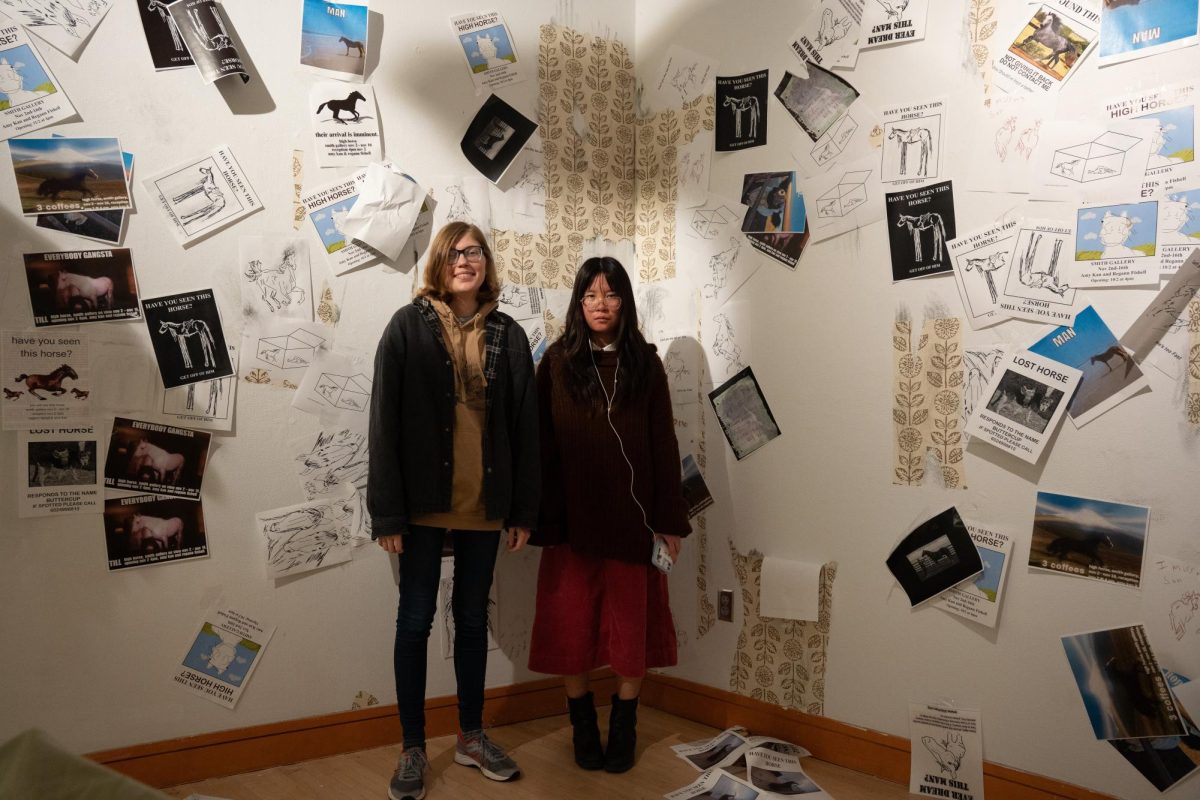A while ago I was looking at a pack of Marlboro Reds and a funny idea popped into my head. What if it was ten times bigger? What if I made a gigantic box of Marlboro cigarettes using papier-mâché? It seemed like the perfect medium for supersizing a cigarette box.
My mind raced. It jumped to the doughnut with the oversized cup of coffee seen as you enter Bob’s. Maybe I could add to that … After all, what goes better with coffee and doughnuts than a cigarette?
Fellow High Streeter Asa Wilder ’10 and I began to brainstorm different ways to make it happen. Cardboard. Wheatpaste. Newspaper. Toilet paper rolls for the cigarettes inside of the box. For a few weeks we gathered supplies before finally beginning to put it together, taking care to keep the proportions as accurate as possible.
While we worked, we began talking about the hilarity of enlarging all sorts of different objects. Our imaginations ran wild. We could make a huge tack, a toilet, a port-o-potty or a keyboard. Possibilities abounded. We had stumbled across something new, something simple and exciting.
As it turned out, our idea—like so many ideas these days— had already been dreamt up and executed, specifically by Swedish-American artist Claes Oldenburg. In his early years, Oldenburg was known for his soft (cloth-based), interactive sculptures, including “Lipstick (Ascending) on Caterpillar Tracks” at Yale University. The 23-foot statue had to be pumped up by viewers in order to stand up straight until a refurbishing project gave it more stability.
Later on in his career, Oldenburg became known for recreating quotidian, mundane objects on a large scale and placing them in various public places. While browsing through images of gigantic clothespins, hammers and upturned ice cream cones online, I was surprised to find a sculpture that looked familiar.
Where had I seen it? I wracked my mind, then finally gave up and looked it up. Turns out that the “Crusoe Umbrella” I saw is right here in Iowa, in front of the Des Moines Civic Center.
Oldenburg’s art hits home in a very unique way for me, in a way that I find kind of difficult to articulate. Why is it that I am so attracted to disproportionately large objects? Is it a humor thing (like it was with the oversized pack of cigarettes)? Does it have political appeal? Surrealist appeal?
It’s a very simple concept, and its value lies in its ambiguity. One can understand it and relate to it on an entirely subjective level. All Oldenburg really does is blow up an object and plop it in an unexpected space. He takes familiar objects and presents them in unfamiliar settings. As he puts it, he strives to make art “that does something other than sit on its ass in a museum” and definitely succeeds.
“We don’t copy the objects we use, we try to transform them and we hope they go on transforming as you look at them. The idea of endless public dialogue … visual dialogue … is very important to us,” Oldenburg said during an interview about a 2002 installation in San Francisco. Oldenburg’s work playfully asks its viewers to think about objects in a new way, devoid of the heavy-handedness that one might associate with contemporary artists.
I guess that silliness is what I like about Oldenburg. To someone else his sculpture might be more poignant, stultifying materialism in our day and age. To others it might be simply inane—not even worth a mention. Oldenburg’s message is basically whatever you want it to be, meaning that the importance of his work lies in the dialogue that it inspires between viewers.
Back in Grinnell we’ll continue to work on the oversized cigarette box … born as a joke, we’ll put it in Bob’s or in some other public space and see whether any conversations get started.



















































